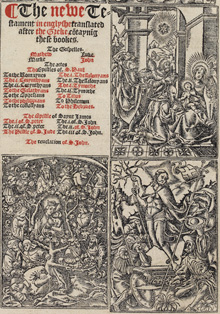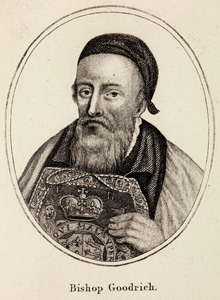The Great Bible
The breakaway from the Roman Church was complete in 1534, King Henry VIII becoming Supreme Head of the Church of England. Henry was soon petitioned to order a Bible to be published in ‘the vulgar English tongue’. Coverdale’s version of 1535 was followed in 1537 by another version by John Rogers, under the pseudonym Thomas Matthew, combining Tyndale’s and Coverdale’s work. Thomas Cromwell, the King’s minister, and Thomas Cranmer, Archbishop of Canterbury, were allowed to publish it, after further revision of Matthew’s Bible by Coverdale. This ‘Great Bible’ appeared in 1539, with a second edition in 1540 containing Cranmer’s celebrated preface, the classic statement of the Reformation principle of ‘Scripture alone’. In 1547 Cranmer published the first of his Homilies, A fruitful exhortation to the reading and knowledge of Holy Scripture, setting out for ordinary people how they should read the Bible. Seven editions of ‘Cranmer’s Bible’ appeared before publication was suspended at the end of 1541. Bishop Goodrich of Ely had a copy of the King’s injunctions of 6 May 1541 pasted into his register, ordering ‘the Byble of the largest and greatest volume, to be had in every churche’.


